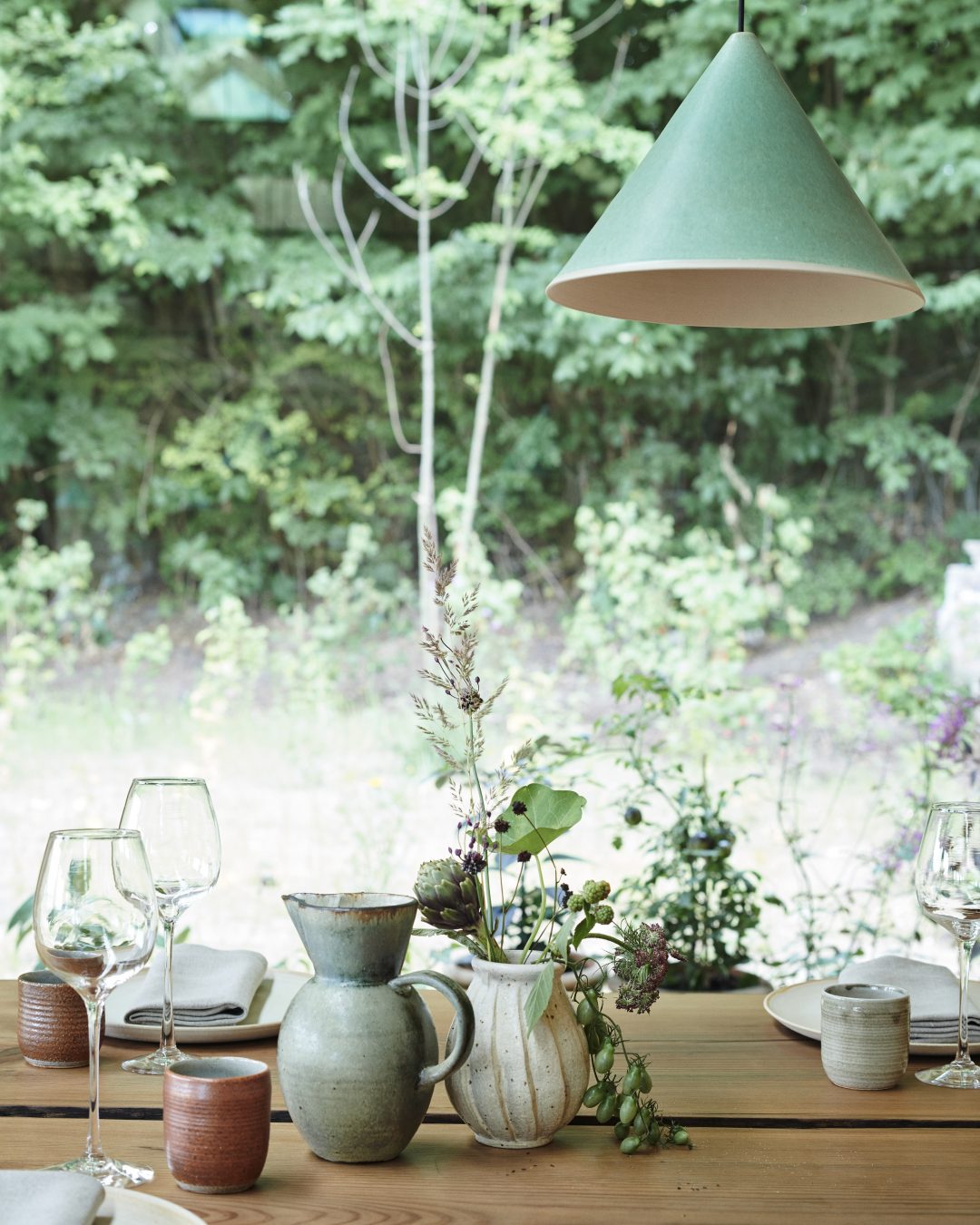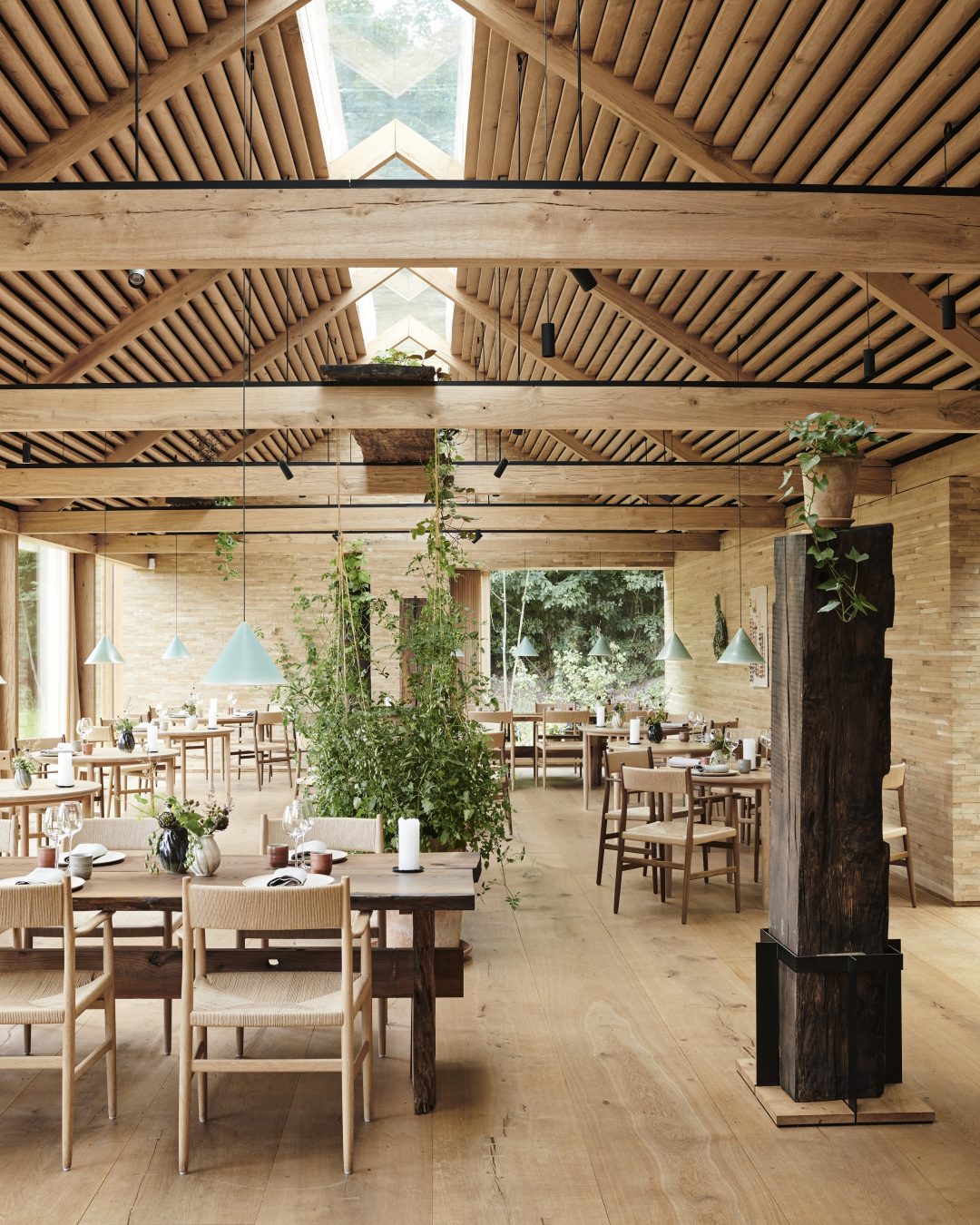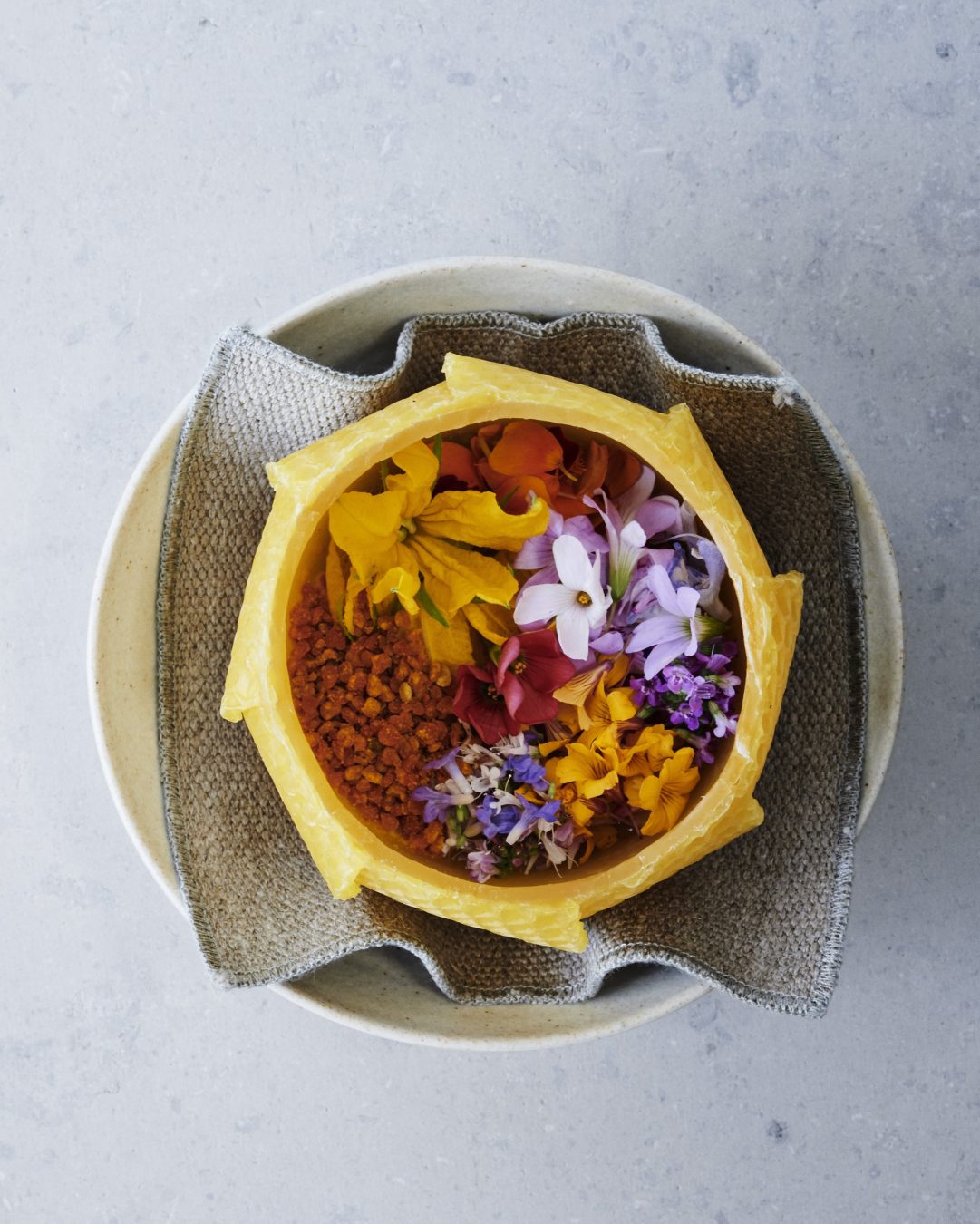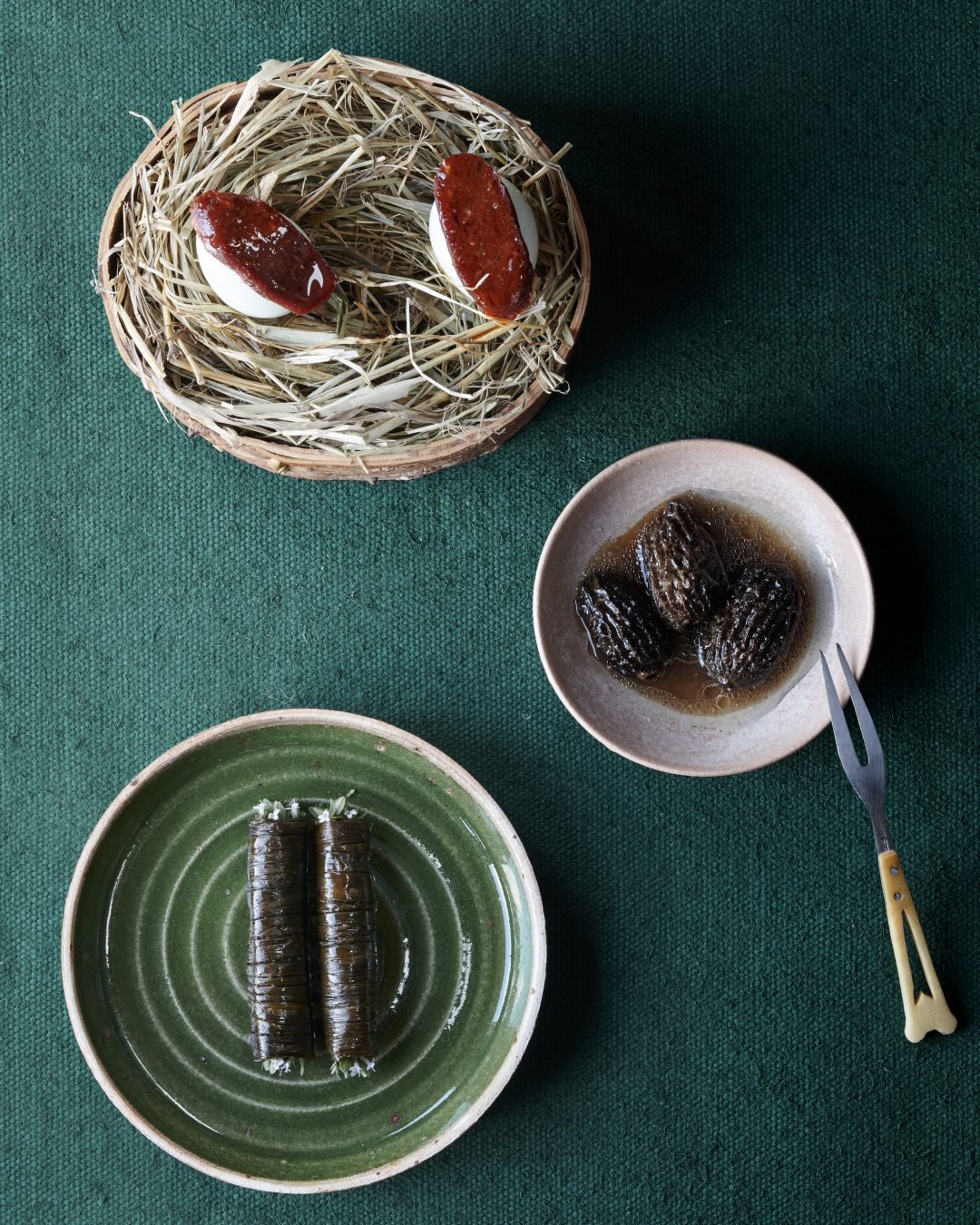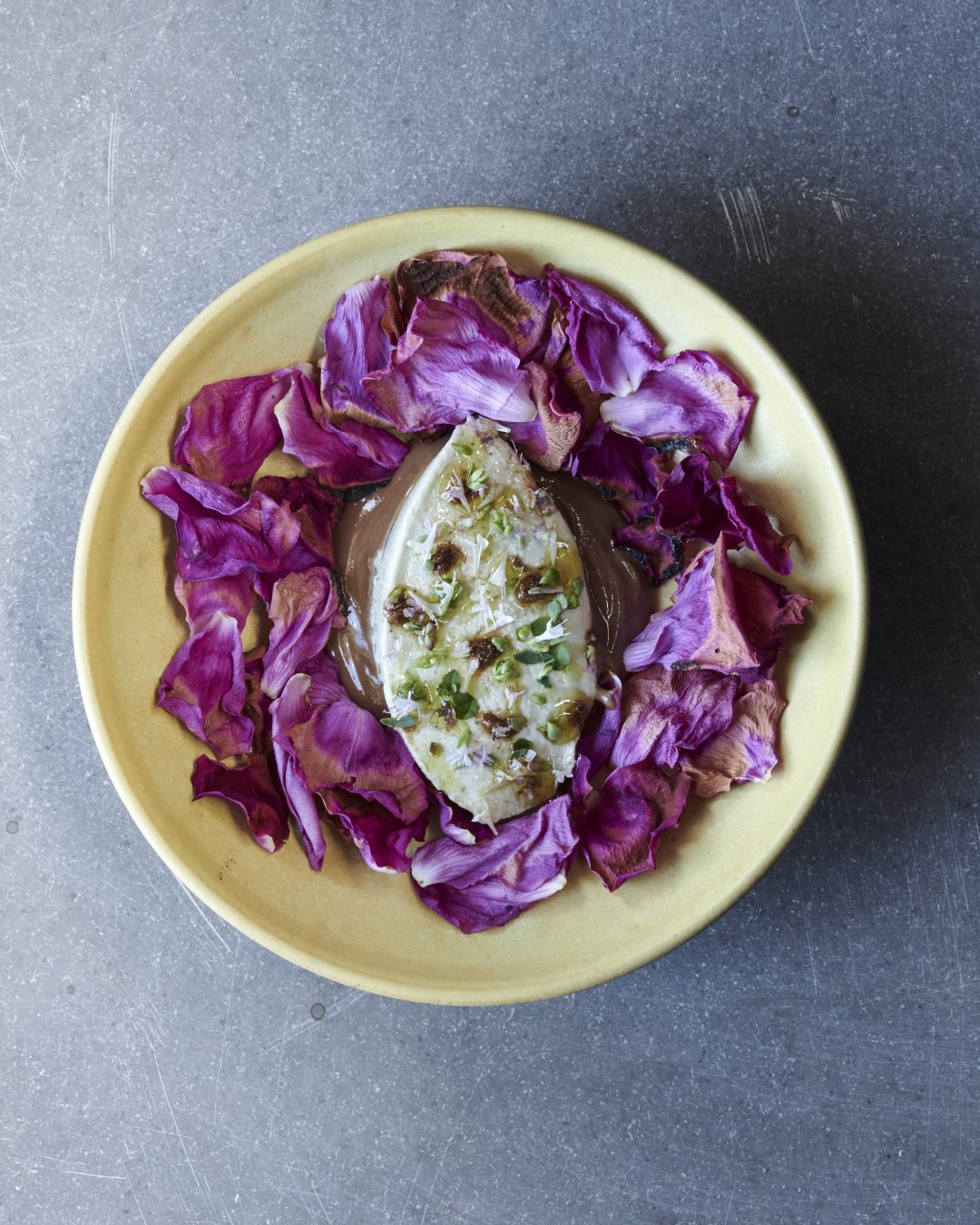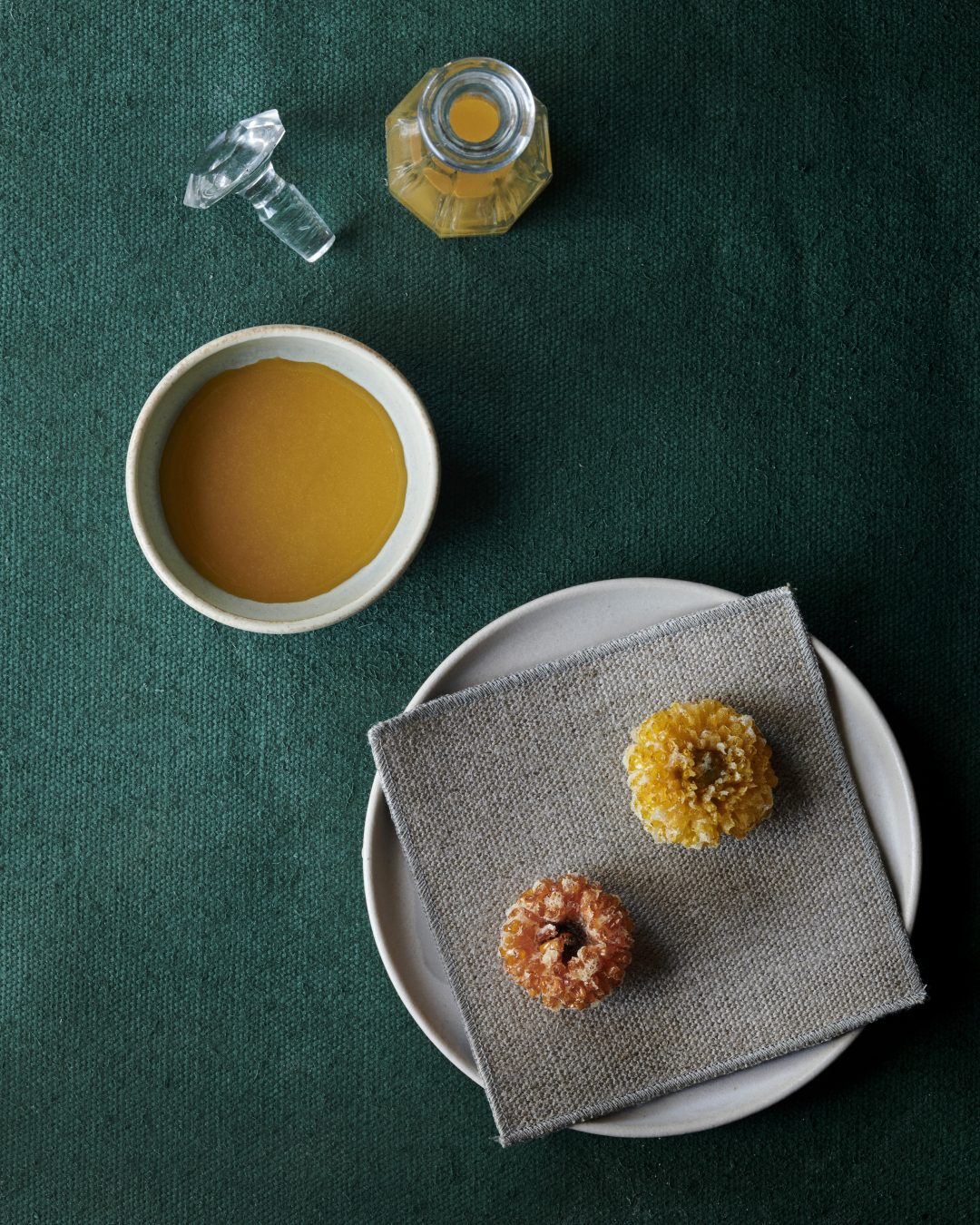When you’re one of the most talked-about restaurants in the world, your every move is followed with bated breath. This is perhaps no truer anywhere than at Copenhagen’s Noma (and by extension, with its lauded chef René Redzepi). Shutting down in 2017 to reopen in 2018 in a different location with an all-new menu format was a bold move. Considered one of the best restaurants in the world, Noma has officially morphed into a new version of itself—call it Noma 2.0.
After snagging a reservation in the brief two-minute window before the whole week sold out, this author headed to Copenhagen’s infamous anarchist community, Christiania, which has been self-governing since forming in 1971. Though busyness lies around the bend, down the curved road to Noma is a pond where swans and coots linger, creating a vibe almost suburban and sleepy. A trash-burning power plant rises in view across the water, making this place feel entirely separate from contemporary Copenhagen.
Nearing closer to the restaurant’s address, it becomes clear that the mini complex of 11 buildings—designed by praised Danish architect Bjarke Ingels—is all Noma: three greenhouses (crucial given Scandinavian weather extremes); a rooftop garden; an ant farm; a wine storage house; a butchery facility; and the restaurant’s famed fermentation lab. There are even staff facilities with a workout room. Arriving here at the height of summer, the weather is hot and the mood is tranquil as the sun sets for a couple short hours of darkness.
Lined floor-to-ceiling with sanded oak and Douglas fir, the lofty, sky-lit dining room impresses in its cozy simplicity. Seated in custom Danish modern chairs, guests can gaze through massive glass windows across the pond to one side, while the spacious, bustling kitchen hums to the other. It feels like dining in someone’s chic country estate.
The new Noma’s menu is changed three times per year: from winter to spring the focus is seafood, summer to early fall is all about vegetables, and fall to the end of the year sees a celebration of game and forest. For the current vegetarian menu, around 20 courses flow over two to three hours. Whereas seaweed fronds and shells were involved in plating the former seafood menu, this time around, soups are hidden inside potted plants (yes, you have to stick your face in the plant to sip it out) and quail eggs garnished with hip berry “chorizo” arrive on a bed of hay.
Foraging remains paramount as the Noma crew explores all manner of edible plant life. The much-discussed showstopper, celeriac shawarma, is a tower of meat-like celeriac oozing fatty goodness and shown at the table on a spit before returning, sliced and unctuous, on a plate. Sea buckthorn and blackcurrant fruit leather (in Fruit Roll-Up territory) are cut into the shape of a butterfly and speared with a lavender sprig. Fried marigold flowers are doused in whiskey “egg nog.”
One of the biggest moments comes with a decadent offering of Perigord black truffles preserved for six months in truffle jus and layered with crispy milk skins and cheese, evoking a sort of grilled cheese sandwich in a few elevated bites, and paired expertly with mushroom tea. It is difficult to restrain a sigh of pleasure after each taste.
The one misstep—and, frankly, there shouldn’t be any in a restaurant of this stature—is on the drink side. At many of Copenhagen’s best restaurants, it is difficult to find a crisp, dry white or sparkling wine that isn’t unfiltered and slightly funky; this is also the case at Noma, where with this particular meal, all wine pairings covered only 2014 to 2017 vintages. The range and depth of Noma’s wine pairings does not equal many of the best Michelin restaurants around the world—some pours, like a Pheasant’s Tears Rkatsiteli, are downright commonplace.
At restaurants of this caliber, it’s the norm to discover under-the-radar, small producers that can’t be easily found. With the best sommeliers, it’s not about the most expensive bottles but about what is the most interesting, elegant, or unique. While pairings at Noma are certainly lovely, it is all fairly similar: the type of wines easily found at local wine shops or natural wine bars in North America. More is expected from the great Noma.
This disappointment, however, does not diminish the exceptional vision of the food and the inspired play with vegetables, nor the seamless flow of the waitstaff. Post-meal, a tour of the complex (Scandinavian beer in hand) reveals empty tanks that housed seafood during the previous season, bottles and books, fermentation projects, and inviting break rooms. By all accounts, it appears to be a soothing, idyllic place to work.
The harbourside 18th-century warehouse that hosted the original Noma from 2003 until 2017 is now home to the worthwhile Restaurant Barr. While the former Noma inspires with rustic woods and city views, the sense of isolation felt when arriving at Noma 2.0 allows guests to slow down, breathe, and feel transported to another plane. More than a restaurant, it’s an environment unto itself: experimenting, playing, and pushing boundaries.
Read the highlights from restaurants around the world.

